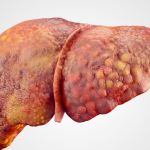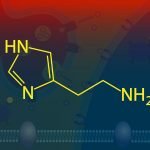Naturopathic Care & Pain: Lessons from an Interdisciplinary Medical Practice – Part 1
Judith Ancheta, ND
Naturopathic doctors have the ability to effect profound changes and contribute to quality healthcare. As a proud member of the profession, I can easily state that we know this. The patients we have the pleasure of working with to improve health can confirm this. The question is, however, do our esteemed medical colleagues know the extent of our ability to contribute? Some, yes, but probably not to the extent they could, which would drive greater intercollaborative efforts. In this paper, I would like to share some thoughts about increasing interprofessional awareness within the context of a Canadian naturopathic family practice set within an interdisciplinary medical practice with a focus on interventional chronic pain management.
Challenges of Interprofessional Collaboration
Effective pain management can be complex, requiring approaches that exceed the expertise of 1 profession. For health professionals to collaborate in meeting patients’ needs, an understanding of each other’s role and expertise is required. This understanding is the foundation of valuing and respecting others’ contributions in the management of complex patients with fibromyalgia and chronic persistent pain. The use of randomized controlled trials has not been documented in a Cochrane systematic review of interprofessional education.1 A review of the literature and existing academic curricula reveals a deficiency in interprofessional collaboration,2 with few collaborative learning experiences for the conventional management of chronic pain, never mind the intercollaborative healthcare teams involving naturopathic medicine. As interest for interprofessional education continues to grow, so too does the need to cultivate positive intercollaborative relationships to coordinate patient care in an effective manner.3
Cooper et al (2001) conducted a systematic review of interprofessional education studies.4 Several obstacles were identified to successful practice, including challenges encountered in clinical practice: 1) a lack of time; 2) varying schedules and interests specific to each professional group; and 3) scarce financial resources.
It is an ongoing endeavor working within this unique environment, especially given the scarcity of opportunities to learn and practice as a naturopathic doctor in this context. I have observed that the motivation and willingness of a clinic team to collaborate are key factors in the success of interprofessional initiatives, followed by the flexibility of different healthcare providers regarding differing approaches while working and learning together in a clinical context.
With the backdrop of the interprofessional state of affairs, as this naturopathic doctor sees it, let’s discuss how this translates into everyday practice for a community naturopathic doctor practicing within an interprofessional, interventional, chronic pain management team-setting.
The Fibromyalgia & Chronic Non-Cancer Pain Patient: Overview
The term fibromyalgia comes from the latin term for fibrous tissue (fibro) and the Greek terms for muscle (myo) and pain (algia). It is considered an arthritic-related condition that impairs the joints and soft tissues but does not cause inflammation or damage to the joints, muscles, or other tissues.5 The main symptom is chronic, widespread musculoskeletal pain that does not have a physiological etiology that can be identified; there tends to be symmetrical affliction of the body, axial involvement, reports of myalgia, and tender points. It is postulated that patients with fibromyalgia experience a malfunction of their central nervous system and experience an amplification of pain transmission and detection, as well as abnormal collagen metabolism.5,6 It is said to affect a ratio of 9 females to 1 male.5 Associated symptoms include fatigue, sleep disturbances, irritable bowel syndrome, depression, difficulty concentrating, anxiety, dizziness, chest pain, numbness or tingling of extremities, dysmenorrhea, constipation, and gastroesophageal reflux.5 Given the scientific discrepancies about its etiology, some medical experts prefer the term “fibromyalgia syndrome.” For fibromyalgia patients, the aim of treatment is symptom reduction, to maintain and improve function, using a combination of non-pharmacologic and pharmacologic strategies.5,7 Patients are heavily encouraged to participate in self-management strategies, with exercise evaluated to be the best non-pharmacological management tool to enhance this population’s self-efficacy.7
My Approach and Assessment
All patients undergo a thorough history, complete physical examination, review of blood work and imaging, addressing the fundamental causes of disease (tolle causam) and addressing the whole person through individualized treatment (tolle totum). With respect to our chronic pain patients, I rely on my skills of observation to really “see” the patient in front of me and assess his or her concerns.
The challenge in dealing with the fibromyalgia and chronic non-cancer pain population is that many classic rheumatological laboratory markers examining arthritides are elevated but non-specific. Plain-film radiographs of patients do not always capture the reason patients present with persistent pain, as they can be normal or only show non-specific changes early in the disease process, while others may demonstrate classic findings of specific rheumatologic disease. In the fibromyalgia patient population, physical investigations are usually unremarkable, and in my experience these patients come with pre-existing medical concerns, whose picture is made more difficult because of polypharmacy.8 Furthermore, the tender-point examination is not required to confirm the diagnosis of fibromyalgia or gauge severity,8,9 and improvement of pain at the fibromyalgia tender points is not a consistent indicator of the benefits received from naturopathic care or other complementary healthcare modalities.
In addition to the pain assessment considerations listed in Table 1, my palpation skills help me in my diagnoses of the population of patients – for instance, in my assessments I am looking for evidence of bony hypertrophy and crepitus that may also be seen in a fibromyalgia patient with osteoarthritis; palpable synovitis paired with morning stiffness is usually indicative of inflammatory arthritic pain; and fever, fluctuations in weight (particularly an unintended weight loss), and fatigue can be indicative of the severity of pain corroborated with patient reports. An understanding of patient presentation helps guide choice of modalities used and treatments to match the vital force of the patient.
Table 1. Pain Assessment Considerations
| Disease chronology |
| Inflammation |
| Distribution of symptoms |
| Extra-articular manifestations |
| Disease course |
| Patient demographics |
Treatment in a Co-managed Clinical Context
In the context of a community naturopathic family clinic in Ontario, where patients come from a wide geographical area, by the time patients are seated across from me, naturopathic care is occasionally being sought as a “last resort.” Some of these patients have sadly been suffering with chronic pain for an average of 10+ years, and most of these patients are on disability. They usually have begun receiving interventional treatments offered by our knowledgeable and compassionate medical pain consultants. They learn about naturopathic care, as this clinic team recognizes there is not 1 expertise that can necessarily address all the patients’ complex needs; as such, patients are introduced to a selection of healthcare providers and are encouraged to think about what mix of service providers will best suit them.
In my capacity as the consulting naturopathic doctor on the clinic team, patients are offered the ability to participate in a 6-week-long series of lectures provided by members of the interdisciplinary team. This program is supervised by the medical director and was created to help patients receive information about how different members of their healthcare team can help them with their fibromyalgia and chronic pain conditions. In my role, I dispel common misgivings, particularly the idea that there are competing interests between conventional medical care and naturopathic medical care, and instead encourage an awareness that the mix of service providers is able to contribute to better patient outcomes. Our patients are excited by this and the intercollaborative efforts of our team.
It is my observation that knowledge of naturopathic care decreases, the further patients reside from the General Toronto Area (GTA). My job as a naturopathic doctor is primarily to educate patients about their healthcare options. There are chronic pain patients I encounter who are receiving interventional treatments without having addressed basic foundations for health promotion. Educating patients about key dietary and lifestyle choices is the foundation I emphasize, to help patients help themselves to start. The interactive lecture series comes alive as patients share their stories – some quite desolate – and what they are interested in receiving out of the time we spend together. As a result of our sessions and some care implementing some of the various strategies discussed, patients have reported a reduction in pain, as well as an intent to continue their self-care efforts supported by naturopathic care and further guidance to enhance their quality of life.
Bridging Gaps with Other Healthcare Providers: Profession-Specific Language & Commonality
Though I appreciate how eclectic each naturopathic doctor’s approach to primary care is (and I would not want any of the positive work being done to be stymied in any way), it is my opinion that being able to elucidate standards of treatment is important for the advancement of the profession, for the reason that it helps us communicate on a basic level with (specifically) our classically-trained medical counterparts. I am constantly presented with the challenge of honoring the precepts of our profession for individualized care, while also consistently utilizing particular protocols so that a familiarity and level of comfort is achieved about our methods. This is especially true for those who are hesitant to receive naturopathic care. Furthermore, I have found this to be beneficial in helping our healthcare counterparts understand that we are aligned and are also working for the best interests of our patients.
I am finding it is equally important to continuously examine my own process and evaluate patient outcomes for pain management, help patients articulate how our work with one another has helped their quality of life, and encourage them to share this directly with their healthcare providers, so that there is a positive message about the naturopathic profession’s contribution in the area of continued improvement in patient outcomes – the heart of “evidenced-based” medicine, helping 1 patient at a time.
The mainstay of pain assessment is the patient’s self-report. One of the challenges however, is capturing patient opinion about pain management in such a way that it reflects the quality of care received and also be able to effectively distill how their naturopathic care plan is contributing to improved outcomes when patients are receiving multidisciplinary treatments. Being able to do so will help open up discussions to further interdisciplinary collaborative patient care. As naturopathic doctors, 1 question we can continue to think about is this: how are we able to improve communication regarding how our naturopathic modalities contribute to optimal pain co-management?
Currently, there does not exist a validated patient outcome questionnaire that is available from the Canadian Pain Society9 that could be easily adapted for use in a naturopathic community family practice setting; this is because these questionnaires primarily inquire about nursing, hospital care, and pharmacological management. Some challenges in collecting this feedback from the chronic pain population are fatigue, poor health and comorbidities, dissatisfaction and/or lack of interest, and a lack of intimate knowledge of the patient’s disabilities. In the chronic pain community, having an increased awareness of physical disabilities, such as the use of one’s hands to respond to paper or digital questionnaires, is an important consideration.
Additional challenges for consideration include occasional discrepancies in patients’ self-reports of pain, their behaviors, and physiological indicators. It is my observation that patients diagnosed with fibromyalgia and chronic pain fall into 2 categories: 1) those that report much more severe levels of pain than what might be expected given their physiological indictors (likely, I suspect, because they are used to much higher levels of self-care); and 2) those that underreport pain because they fear overmedication (pharmaceutical, herbal, nutritional supplementation) or believe the pain they experience is not something that ought to be complained about.
Given the time taken to document lengthy naturopathic visits, an abbreviated evaluation is suggested that captures the following parameters: 1) patient satisfaction with naturopathic care and interventions; 2) patient satisfaction with overall healthcare teams’ provision of care; and 3) patient opinion of their pain management.
Conclusion
Fibromyalgia patients experience chronic widespread pain that affects approximately 2-4% of people, with increased prevalence in women compared to men.9,10 These patients manifest a variety of health concerns, including fatigue, sleep disturbance, mood disorders, and/or somatic symptoms. Specialist confirmation of diagnosis is no longer required, and is made following a clinical evaluation of the patient’s medical history, physical examination, and limited laboratory testing. Fibromyalgia and chronic non-cancer pain are typically diagnosed in a primary medical care setting, with specialist referral as needed for selected patients presenting with atypical symptoms and particular challenges in management. 9,10
Naturopathic doctors have an ability to contribute to improved patient outcomes and quality of life measures in the fibromyalgia and chronic non-cancer pain population, by decreasing physical impairment and enhancing global functioning. Current care for this population is centered on treatment of the most troublesome symptoms; however, the best outcomes appear to be achieved using multiple modalities. Only duloxetine and pregabalin are approved for treatment of fibromyalgia pain by Health Canada, and it is common practice that other medications are used off-label to address specific symptoms.5 Given documentation that medications alone can provide only modest symptom relief, it therefore becomes imperative that the co-management of fibromyalgia patients also include intercollaborative non-pharmacological strategies that promote active patient involvement and the implementation of healthy lifestyle strategies.
In Part 2 of this paper, some treatment considerations in devising a complementary care plan in the co-management of fibromyalgia and chronic non-cancer pain patients are presented by this author, including an example of a clinical case.
 Judith Ancheta, ND, is a graduate of McMaster University in Hamilton, Ontario, and the Canadian College of Naturopathic Medicine in Toronto, Ontario. She has been in practice since 2011 and provides compassionate, patient-centered healthcare within an interdisciplinary medical team model. The naturopathic care provided often means that patients can minimize the amount of pain medications needed and frequency of interventional treatments for pain, based on the recommendations of their interventional medical physicians at the Wilderman Medical Clinic. She regularly lectures at the clinic’s Fibromyalgia and Chronic Pain Program, to help patients with their pain and to improve their quality of life.
Judith Ancheta, ND, is a graduate of McMaster University in Hamilton, Ontario, and the Canadian College of Naturopathic Medicine in Toronto, Ontario. She has been in practice since 2011 and provides compassionate, patient-centered healthcare within an interdisciplinary medical team model. The naturopathic care provided often means that patients can minimize the amount of pain medications needed and frequency of interventional treatments for pain, based on the recommendations of their interventional medical physicians at the Wilderman Medical Clinic. She regularly lectures at the clinic’s Fibromyalgia and Chronic Pain Program, to help patients with their pain and to improve their quality of life.
References
- Zwarenstein M, Reeves S, Barr H, et al. Interprofessional education: effects on professional practice and health care outcomes. Cochrane Database Syst Rev. 2001;(1):CD002213.
- Watt-Watson J, Hunter J, Pennefather P, et al. An integrated undergraduate pain curriculum, based on IASP curricula, for six health science faculties. 2004;110(1-2):140-148.
- Reeves S, Zwarenstein M, Goldman J, et al. Interprofessional education: effects on professional practice and health care outcomes. Cochrane Database Syst Rev. 2008;(1):CD002213.
- Cooper H, Carlisle C, Gibbs T, Watkins C. Developing an evidence base for interdisciplinary learning: a systematic review. J Adv Nurs. 2001;35(2):228-237.
- Canadian Rheumatology Association. Position Paper on Fibromyalgia. Updated September 2015. CRA Web site. http://rheum.ca/images/documents/CRA_Position_Paper_on_Fibromyalgia_(updated_Sep_2015).pdf. Accessed February 20, 2016.
- Bennett RM, Friend R, Jones KD, et al. The Revised Fibromyalgia Impact Questionnaire (FIQR): validation and psychometric properties. Arthritis Res Ther. 2009;11(4):R120.
- Natural Medicines. Fibromyalgia. Natural Medicines Professional Database. Available at: https://naturalmedicines.therapeuticresearch.com/databases/medical-conditions/f/fibromyalgia.aspx. Accessed March 9, 2016.
- Smith B, Peterson K, Fu R, et al. Drug Class Review: Drugs for Fibromyalgia: Final Original Report [internet]. Portland, OR. Oregon Health & Science University; 2011. Available at: http://www.ncbi.nlm.nih.gov/books/NBK55548/. Accessed February 15, 2016.
- American College of Rheumatology. Fibromyalgia. Updated May 2015. ACR Web site. http://www.rheumatology.org/I-Am-A/Patient-Caregiver/Diseases-Conditions/Fibromyalgia. Accessed April 20, 2016.
- Canadian Pain Society. Pain in Canada Fact Sheet: Pain is poorly managed in Canada. June 2014. Available at: http://c.ymcdn.com/sites/www.canadianpainsociety.ca/resource/resmgr/Docs/pain_fact_sheet_en.pdf. Accessed April 20, 2016.









